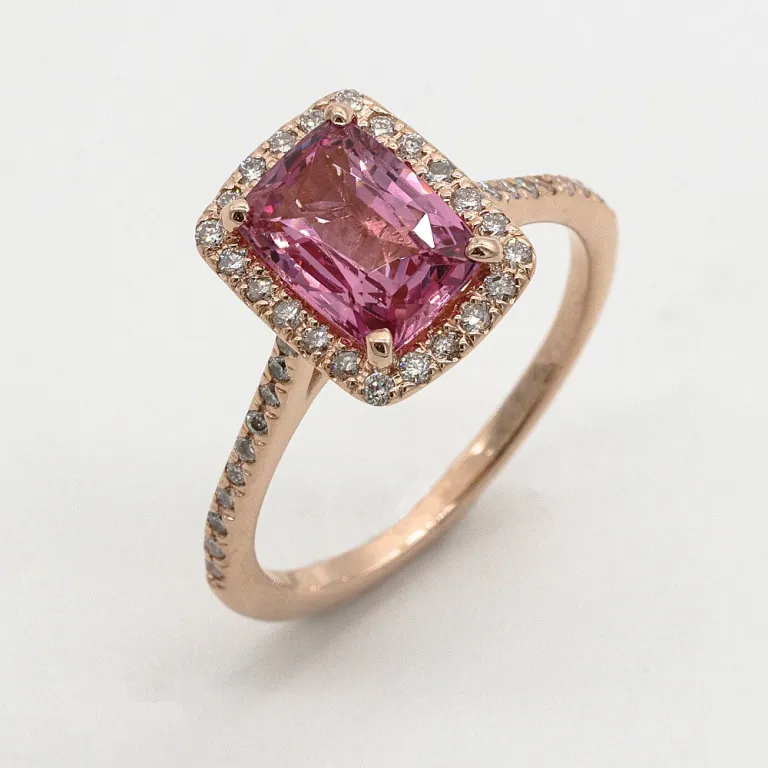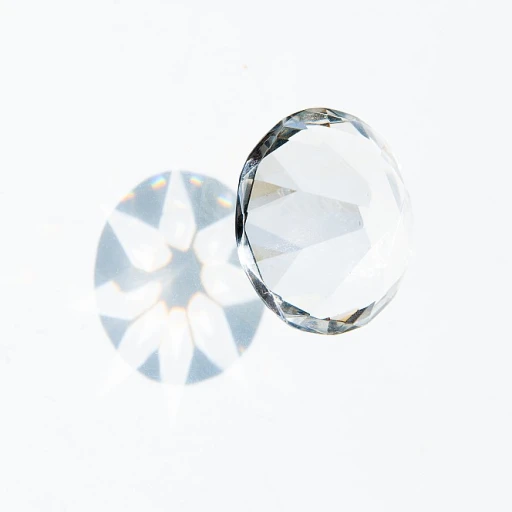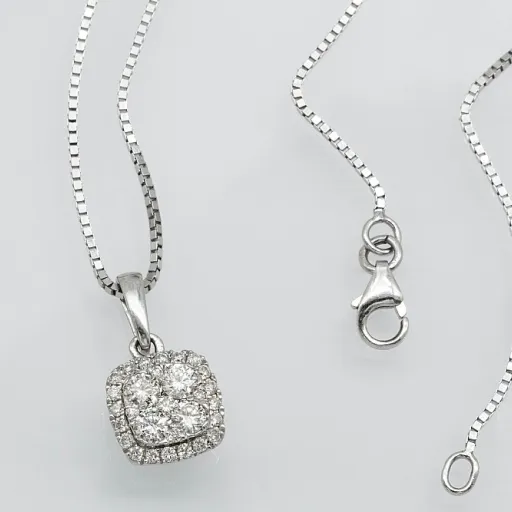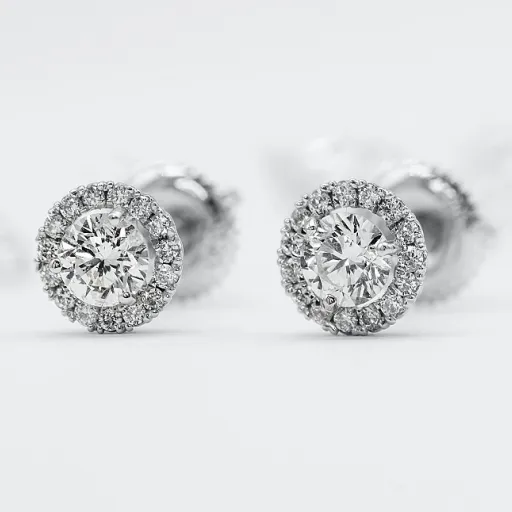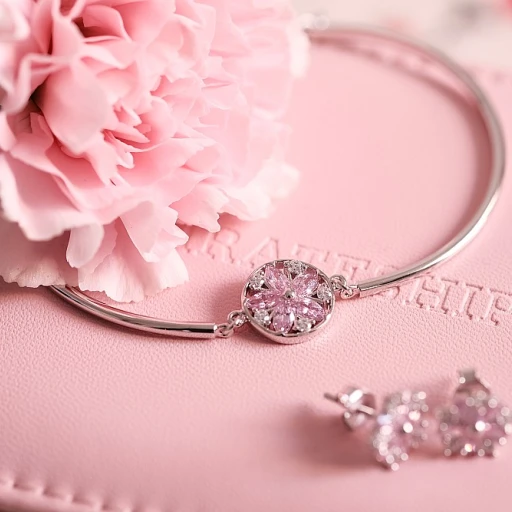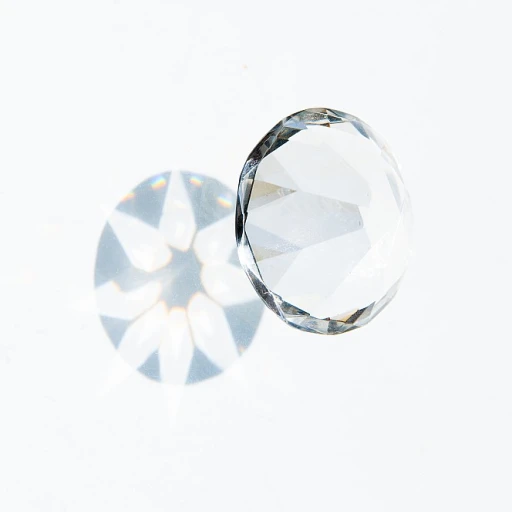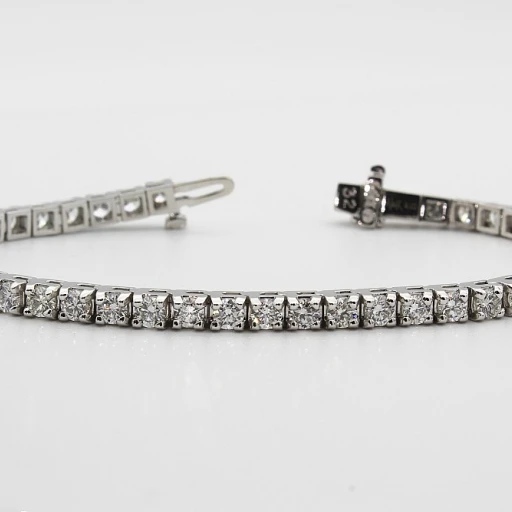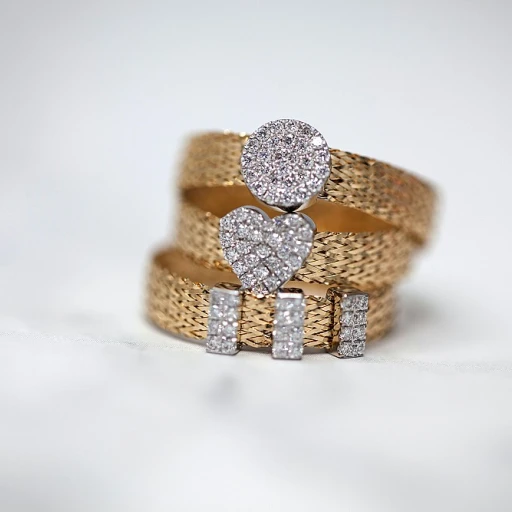
What is white gold electroplating and why is it used?
The transformation of gold into bright white elegance
White gold is a favorite in fine jewellery, especially for engagement rings, wedding bands, and eternity rings. But did you know that the brilliant white colour you see on most white gold pieces is not the natural shade of gold? Gold in its natural state is yellow, and even when alloyed to create white gold, the resulting metal often has a subtle yellow or greyish tint. To achieve that luminous, bright white finish, jewellers use a process called electroplating, most commonly with rhodium.
Why rhodium plating is essential for white gold jewellery
Rhodium plating, also known as rhodium plate or plate white, is the secret behind the stunning appearance of many white gold rings and other fine jewellery pieces. Rhodium, a rare and precious metal from the platinum family, is prized for its reflective, brilliant white finish and its resistance to tarnish. When applied as a thin layer over white gold, rhodium enhances the jewellery’s appearance, giving it a mirror-like shine that beautifully complements diamonds and other stones. This process is especially important for engagement rings and eternity rings, where the white colour and brilliance are highly valued.
- Gold engagement rings and eternity rings often rely on rhodium plating for a flawless, bright white look.
- Without plating, white golds can appear dull or yellowish compared to platinum or rhodium-plated pieces.
- Rhodium plating is also used on other gold jewellery, including bracelets, necklaces, and earrings, to maintain a consistent white colour across collections.
How electroplating shapes the value and perception of fine jewellery
The art and science of gold plating, especially with rhodium, play a crucial role in the value and desirability of white gold jewellery. A well-plated white gold ring or engagement ring not only looks more brilliant but also offers better protection against scratches and tarnish. However, the plating is not permanent and will wear off over time, which is why understanding maintenance and care is essential for owners of plated white gold pieces.
For those interested in the broader world of precious metals and their unique qualities in jewellery, you may enjoy this article on the allure of 925 sterling silver in fine jewelry.
The electroplating process step by step
Preparing the gold jewellery for plating
Before a ring, engagement ring, or eternity ring receives its bright white finish, the gold jewellery must be thoroughly cleaned. Any residue, oil, or dirt can affect how the rhodium plating adheres to the metal. Ultrasonic cleaning and steam cleaning are common steps to ensure the gold, whether yellow, rose, or white gold, is spotless. The jeweler will also inspect the piece for loose stones, especially in diamond rings or engagement rings, to prevent any issues during the process.The plating process: from gold to brilliant white
Once the jewellery is clean, the actual electroplating begins. The piece is submerged in a rhodium solution. Rhodium, a rare and valuable metal, is chosen for its ability to give gold jewellery a bright white colour and enhanced durability. An electric current is passed through the solution, causing rhodium ions to bond to the surface of the gold. This creates a thin, even layer that transforms the gold’s natural hue—whether yellow gold or rose gold—into the sought-after white colour seen in many engagement wedding rings and eternity rings.| Step | Description |
|---|---|
| Cleaning | Removes all contaminants from the gold jewellery to ensure proper adhesion of the rhodium plate. |
| Polishing | Restores the surface, preparing it for a flawless rhodium plating. |
| Electroplating | Applies a thin layer of rhodium to the gold, resulting in a plate white, brilliant finish. |
| Final Inspection | Ensures the plated white gold meets quality standards, with secure stones and even colour. |
Why the process matters for your jewellery
The quality of the rhodium plating directly affects the appearance and longevity of your gold engagement rings, wedding rings, and other fine pieces. A well-executed process will enhance the white colour, protect the underlying gold, and ensure the stones—whether diamond or other gems—remain secure. This is especially important for pieces like an eternity ring, where the brilliance of each stone is showcased by the bright white background. For those interested in the natural beauty of gold, including how it compares to plated white gold, you might find this article on the allure of pure gold insightful. It offers a closer view of gold’s natural colour and how it contrasts with the rhodium-plated look. The art and science of gold rhodium plating require expertise and attention to detail. Each step, from cleaning to the final inspection, plays a crucial role in ensuring your jewellery—be it a diamond engagement ring or a gold eternity ring—achieves the brilliant, white gold finish that makes it truly stand out.Common challenges and risks in white gold electroplating
Key Issues with White Gold Electroplating
White gold electroplating is a sophisticated process, but even the most skilled jeweler faces certain challenges. The goal is to achieve a bright white finish that enhances the beauty of gold jewellery, especially for pieces like engagement rings, eternity rings, and wedding bands. However, the journey from yellow gold or rose gold to a flawless white colour is not always straightforward.
- Adhesion Problems: If the underlying gold is not properly cleaned or prepared, the rhodium plating may not adhere well. This can lead to flaking or uneven colour, especially on rings with intricate settings or pavé stones.
- Thickness Variability: The thickness of the rhodium plate is crucial. Too thin, and the yellow or gold natural tones may show through, dulling the white brilliance. Too thick, and the plating can become brittle, risking cracks or chips over time.
- Wear and Tear: Everyday wear, especially on engagement rings and wedding bands, exposes the plated white surface to friction. Over time, this can cause the rhodium layer to wear off, revealing the underlying gold or even the base metal in some cases.
- Stone Sensitivity: Diamonds and other stones set in white golds can be affected during the plating process. If not protected, the chemicals used may dull the cut or brilliance of the stones.
- Colour Consistency: Achieving a uniform bright white finish across different pieces or even on a single ring can be difficult. Variations in gold alloy composition, previous plating, or even the shape of the jewellery can impact the final result.
Risks to Value and Longevity
These challenges can impact both the appearance and the value of gold engagement rings, eternity rings, and other fine jewellery. For example, poor plating can diminish the perceived quality of a diamond engagement ring or eternity ring, affecting its resale value. Inconsistent plating may also lead to customer dissatisfaction, especially for those expecting a flawless white gold finish.
It’s also important to note that repeated rhodium plating, while restoring the white colour, can gradually wear down delicate details or engravings on gold jewellery. This is particularly relevant for vintage pieces or those with intricate designs.
For a deeper understanding of how different metals and plating techniques interact with gemstones, you might find this article on the allure of a sterling silver ring with moonstone insightful.
Ultimately, the expertise of the jeweler and the quality of the plating process play a significant role in overcoming these challenges and ensuring your white gold jewellery maintains its brilliance and value over time.
How white gold electroplating affects the value of fine jewelry
Impact on Perceived Value and Market Price
White gold electroplating, especially with rhodium, plays a significant role in how a piece of fine jewellery is valued. The bright white colour achieved through rhodium plating gives gold rings, engagement rings, and eternity rings a modern, brilliant appearance that appeals to many buyers. This finish can make a diamond or other stones appear more vibrant, enhancing the overall look of the jewellery. However, it is important to understand that the value of plated white gold jewellery is not solely determined by its appearance.
Factors Influencing Value
- Base Metal: The underlying gold—whether yellow gold, rose gold, or gold white—remains the primary factor in determining intrinsic value. Rhodium plating does not increase the gold content.
- Plating Thickness: A thicker rhodium plate may offer longer-lasting brilliance, but it does not add significant monetary value. Instead, it impacts how long the white colour lasts before re-plating is needed.
- Craftsmanship: The quality of the plating process and the skill of the jeweler can affect both the appearance and durability of the piece. Poor plating can lead to uneven colour or premature wear, which may reduce the value of the jewellery.
- Stone Setting: For rings with diamonds or other stones, the plating can enhance the brilliance and cut of the stones, making them appear more attractive. However, the value of the stones themselves is not changed by the plating.
Resale and Longevity Considerations
When considering the resale value of gold jewellery, buyers and appraisers often look at the gold natural content and the condition of the plating. Over time, rhodium plating can wear off, especially on engagement rings and wedding bands that are worn daily. This means that maintenance and care are crucial for preserving both the appearance and value of the piece. Jewellery that has been well-maintained and regularly re-plated will generally retain a higher market value compared to pieces with visible wear or yellowing.
Market Trends and Consumer Preferences
The demand for bright white golds and rhodium-plated engagement rings continues to grow, influencing both the price and desirability of these pieces. Consumers often view rhodium plating as a mark of luxury and modern style, which can enhance the perceived value of a ring or eternity ring. However, it is essential for owners to be transparent about the presence of plating when selling or appraising their jewellery, as this affects long-term expectations and care requirements.
Maintenance and care for electroplated white gold jewelry
Keeping Your White Gold Jewellery Looking Its Best
White gold jewellery, whether it’s an engagement ring, eternity ring, or a classic gold wedding band, owes much of its brilliant white colour to rhodium plating. This thin layer of rhodium gives gold its signature bright white finish, but it’s not permanent. Over time, daily wear, exposure to chemicals, and even the natural oils from your skin can cause the rhodium plate to wear off, revealing the gold’s natural yellow or rose gold tones beneath.Everyday Habits That Help
- Remove your plated white gold rings and jewellery before using cleaning products, swimming, or applying lotions and perfumes. Chemicals can dull the rhodium plating and affect the white colour.
- Store each piece separately in a soft pouch or lined box to avoid scratches, especially for diamond engagement rings and eternity rings with exposed stones.
- Wipe your gold jewellery gently with a soft, lint-free cloth after wearing to remove oils and residue.
Professional Maintenance Matters
Even with careful handling, the rhodium plating on white golds will eventually fade. Most fine jewellery owners find that their engagement rings or wedding bands need re-plating every 12 to 24 months, depending on wear. A professional jeweller will clean, polish, and re-plate your piece, restoring its brilliant white finish and protecting the underlying metal.
What to Watch For
- Look for signs of yellowing or dullness, especially on high-contact areas like the underside of rings.
- Check the settings of diamonds and other stones regularly. Rhodium plating can sometimes mask tiny scratches or looseness in the metal.
- If you notice any change in the colour or feel of your gold white jewellery, schedule a check-up with a trusted jeweller.
Why Care Is Essential
Proper maintenance not only keeps your white gold engagement rings and eternity rings looking brilliant, but also preserves their value. Regular care ensures the rhodium plate remains intact, the stones stay secure, and the overall piece maintains its original cut and brilliance. Whether your jewellery is yellow gold, rose gold, or plated white gold, attention to care will help it stand the test of time and retain its allure for years to come.
Choosing the right jeweler for white gold electroplating
Evaluating Expertise and Reputation
When it comes to white gold electroplating, the skill and experience of the jeweler are crucial. Not all jewelers have the same level of expertise in rhodium plating or in handling gold jewellery. Look for a jeweler who specializes in white gold and has a proven track record with engagement rings, eternity rings, and other fine pieces. Ask to view examples of their previous work, especially on diamond rings or gold engagement rings, to assess the quality of the finish and the brilliance of the white colour.
Questions to Ask Before Committing
- What type of rhodium plate or gold plating do you use for white golds?
- How do you prepare the metal surface before plating?
- Can you explain the process for maintaining the bright white appearance of plated white gold?
- How do you ensure the stones, such as diamonds or coloured gems, are protected during the process?
- What is your policy if the plating wears off sooner than expected?
Certifications and Transparency
Choose a jeweler who is transparent about their methods and materials. Certifications in metalwork or gemology can be a sign of professionalism. Reputable jewelers will be open about the type of rhodium used, the thickness of the plate white layer, and whether your gold natural base is yellow gold, rose gold, or another alloy. This transparency helps you understand how the plating will affect the colour and longevity of your engagement or wedding ring.
Aftercare and Support
Reliable jewelers offer clear guidance on maintaining your plated white gold jewellery. They should provide advice on how to keep your ring or eternity ring looking brilliant, and offer aftercare services such as re-plating or cleaning. This ongoing support is especially important for pieces like engagement rings or wedding bands that are worn daily and exposed to wear.
Comparing Costs and Value
While price is a factor, the cheapest option is rarely the best for fine jewellery. Consider the value offered, including the quality of the rhodium plating, the jeweler’s experience with gold white and gold rhodium finishes, and the aftercare provided. Investing in a skilled professional ensures your engagement wedding jewellery retains its bright white brilliance and protects the cut and setting of your stones.
